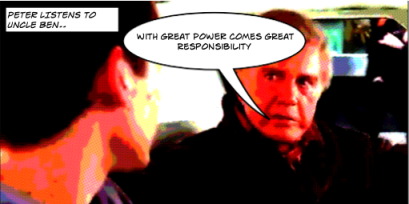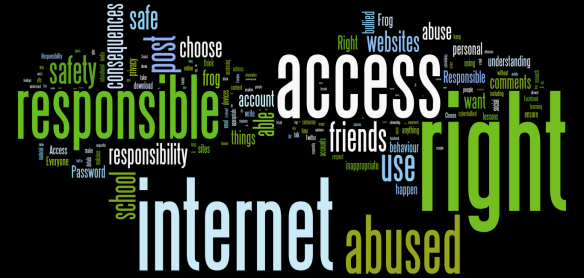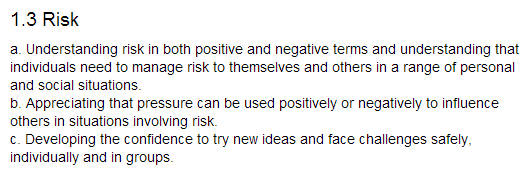This is post in two parts; it started out as a “what we we did on Safer Internet Day” job, but two days after SID 2013 (as it shall be known henceforth) the new Draft National Curriculum was released and that got me thinking..
I am grateful to Alan MacKenizie (@esafety advisor) for helping me to frame my thoughts for this post – as well of course, as for providing such superb guidance on this issue on an ongoing basis
Part One: Safer Internet Day 2013
So let’s look at SID first. This was (to my shame) only the second year we had taken part in SID and I wanted the event to have a higher profile this year. It is now on the school calendar which meant that I was able to start discussing the planning earlier – I was also able to discuss it in our Middle Leaders meeting, which provided me with some useful thoughts and ideas from other colleagues. SLT – and other Subject Leaders – were very supportive and I think events like this don’t work unless you have SLT firmly on board.
We decided to take the school off timetable last period on the day, for a Internet Safety lesson; I planned and resourced the lesson, which was delivered in Mentor Groups. We followed the SID 2013 theme of rights and responsibilities – the main objective of the lesson was that every mentor group was to come up with their own “code” of internet safety rights and responsibilities. The fact that we have a vertical mentoring system gave lots of opportunities for good discussion. Each group discussed and voted on their “top 3” which were added to a Google Form (you’ve got to love Google Forms!) in order to collate this information.
A few little things about the day..
Whole-staff Involvement
At the suggestion of the Deputy Head, both SLT and Associate Staff joined the mentor groups during the lesson in order to reinforce the “whole school” emphasis we were trying to place on the day. OFSTED believe that involving everyone in e-safety contributes towards “Outstanding” practice. In their 2010 report, “The Safe Use of New Technologies“, they give an example;
“In the five schools where provision for e-safety was outstanding, all the staff, including members of the wider workforce, shared responsibility for it.
Associate Staff are so often the first port of call for vulnerable students – the ones who talk to the office staff, the dinner ladies, the learning supervisors before they will share anything with a teacher. From my point of view the involvement of EVERYONE was what made the day a success.
I received a lot of positive feedback from staff regarding how the lesson went – this was very gratifying considering the challenges involved in planning a single lesson for 100 or so staff, without access to computers – which had to be suitable for students in every year group!
Follow Up
There is a danger that worthy whole-school events like Safer Internet Day take place amongst a lot of hoo-haa and noise, and then disappear without trace until the following year. If we’re not careful there is no IMPACT. One of my tutor group said to me “just doing a day won’t achieve anything” and of course he’s right. But you achieve more than by NOT taking part at all and it needs to be a start point not a full stop. This week we are following up SID with student-led assemblies. Student Leaders will feedback the results of the whole school rights and responsibilities exercise, and we will use the key ideas contributed by the students to inform a more student-friendly Internet Safety Policy.
An up to date, student-friendly policy, informed by the views of the student voice, is vital for us since we are currently going through the process of developing BYOD in our school and this can’t happen without students “buying in” to the culture of responsibility that this will necessitate (as referenced by the Spiderman quote at the top of this post!)
Again, taken from the OFSTED guidance;
“few of the schools visited made good use of the views of pupils and their parents to develop their e-safety provision.”
Next Steps
There is still a lot of work to do..
- Integrating e-safety into PSHE – we are hoping to do this in both KS3 and 4. Not only will it allow us to teach it properly, but will provide important opportunities for student voice. I would like the modules to allow students to devise an e-safety policy of their own which we can use to help us evaluate and improve the existing policy on ongoing basis. After all, the internet changes all the time so any policy regarding its safe use needs to reflect this! Once again, OFSTED’s views;
Rigorous e-safety policies and procedures are in place, written in plain English, contributed to by the whole school, updated regularly and ratified by governors.
- Digital Leadership – we already have a superb cohort of Frog Leaders, with e-safety as part of their remit. I would like to develop thei role of DL in shool and e-safety will have a large part in that.
- Parental Engagement – tweets, stuff on the website and letters home about SID are great, but not really “parental engagement”. Definitely an Even Better If…
- Staff Training – OFSTED identify this as being the most significant weakness in e-safety provision. The expectation is that all staff receive some sort of e-safety training each year. I wonder how many schools do this and if so, what form it takes.
I would be really interested in hearing from any schools that are outstanding practitioners of e-safety to hear what you have done – and how you have done it.
All this is very worthy. E-safety is very important and OFSTED clearly agree, so it should be straightforward to find it in our curriculum. What we are really talking about here is, for want of a better term, “Digital Citizenship” – not just being ABLE to tweet, download and surf, but to fully understand the implications and responsibilities involved with doing so. Which leads me to…
Part Two: Where is “DIGITAL CITIZENSHIP”?
So where is it? It must be SOMEWHERE – after all, OFSTED, in their Inspecting e-safety document have made it clear what they expect from schools, by thoughtfully providing us with Key Features of Good and Outstanding Practice
In terms of teaching they suggest that this includes…
- “A progressive curriculum that is flexible, relevant and engages pupils interest; that is used to promote e-safety through teaching pupils how to stay safe, how to protect themselves from harm and how to take responsibility for their own and others safety.
- Positive sanctions are used to reward positive and responsible use.
- Peer mentoring programmes”.
Wow, excellent – OFSTED are recognising that it needs to be on the curriculum and that it needs to be “flexible, relevant and engages pupils interest” You can alway rely on OFSTED for clear expectations. So that means that we should be able to find some clear guidance on who should be teaching it, right?
So where can we find e-safety in our national curriculum?
A lot of schools will currently be teaching e-safety within ICT – we are – but for how much longer? E-safety was, rightly, added to the ICT Programme of Study in 2009 but it is now GONE from the rebranded 2013 ICT Computing version (along with just about everything else that was there before – but that’s another post waiting to happen)
OK.. so not in ICT. Citizenship perhaps? No mention of it here either. The idea of our young people being good “Digital Citizens” doesn’t seem to vindicate it being in the shiny new 21st century Citizenship curriculum.
The opening lines – the Purpose of Study – of the Citizenship POS state that:
“a high-quality citizenship education helps to provide pupils with knowledge, skills and understanding to prepare them to play a full and active part in society”
Isn’t internet safety a huge part of this? There have of course, been several high-profile legal cases involving the inappropriate use of social networking sites such as Facebook and Twitter that have resulted in prosecution and even imprisonment of the offenders. There seems to be a growing feeling that ADULTS aren’t aware of their rights and responsibilities, so how can we expect children to be?
E-safety isn’t explicitly mentioned in PSHE either- you could loosely interpret “risk taking” as this but it is a broad interpretation…
I find it astonishing that we try to educate students on issues surrounding sex, drugs, alcohol – and now finance – within schools in a structured way, but that we do not do the same with the internet, something which is intrinsically part of students everyday lives.
Despite the omission of e-safety from any part of the national curriculum, OFSTED still regard the failure to teach it as inadequate practice;
“There is no progressive, planned e-safety education across the curriculum, for example there is only an assembly held annually.”
So we’re back to rights and responsibilities. Whose responsibility is it to teach e-safety? ICT staff? Pastoral teams? PSHE teachers? Obviously a combination or all of these and more, but the curriculum guidance provided on this issue is so poor that that there is surely a danger that no-one will take the ball and run with it. More importantly I think it sends a poor message about the importance of e-safety – where will it rate in terms of priority for a DH trying to squeeze subjects into a full curriculum?
Surely we have moved BACKWARDS. Five years after the Byron Reviews and three years after OFSTED’s Safe Use of New Technologies report, there is no home for e-safety in the National Curriculum. This is despite the fact that more students than ever have access to mobile devices, more schools are moving to BYOD policies or 1:1 device programmes
So my question to the DFE and to Mr Gove, is this – when are YOU going to take responsibility?





Reblogged this on The Schools' Scoop and commented:
E-safety is a growing concern since the beginning of the digital age. This blog helps describe some details about the notion: